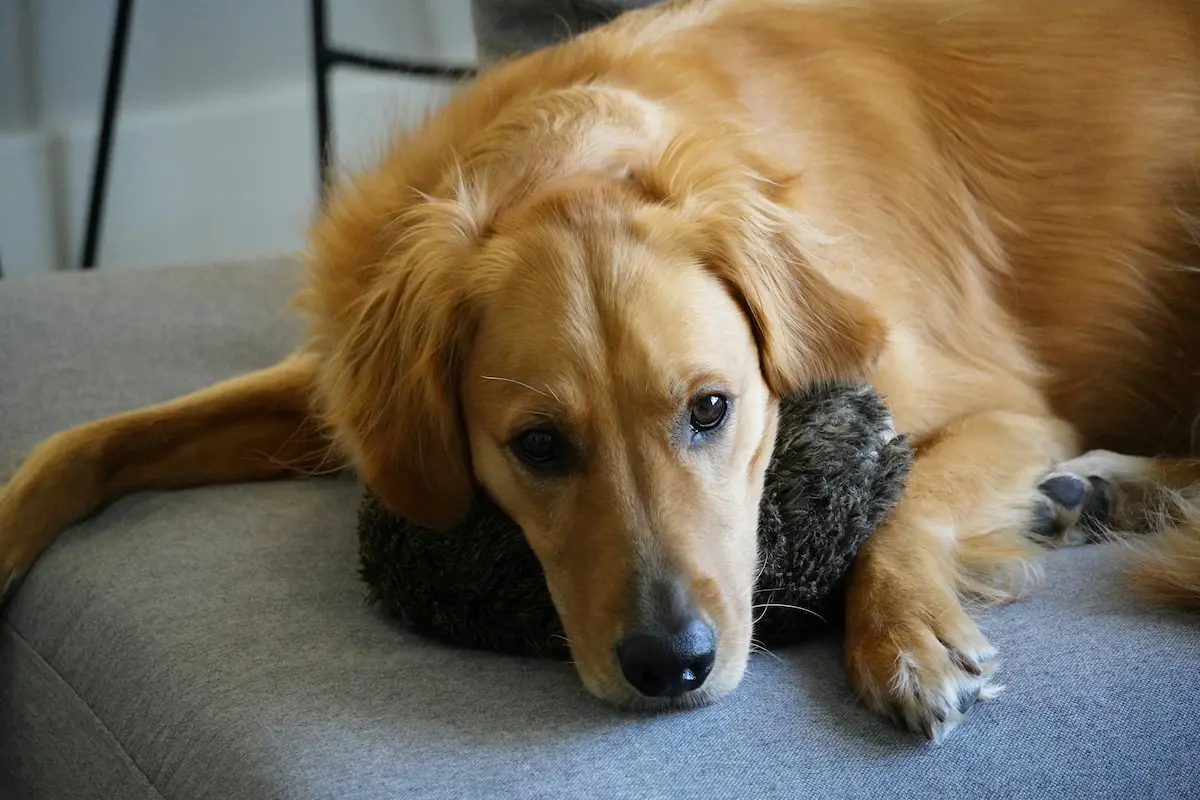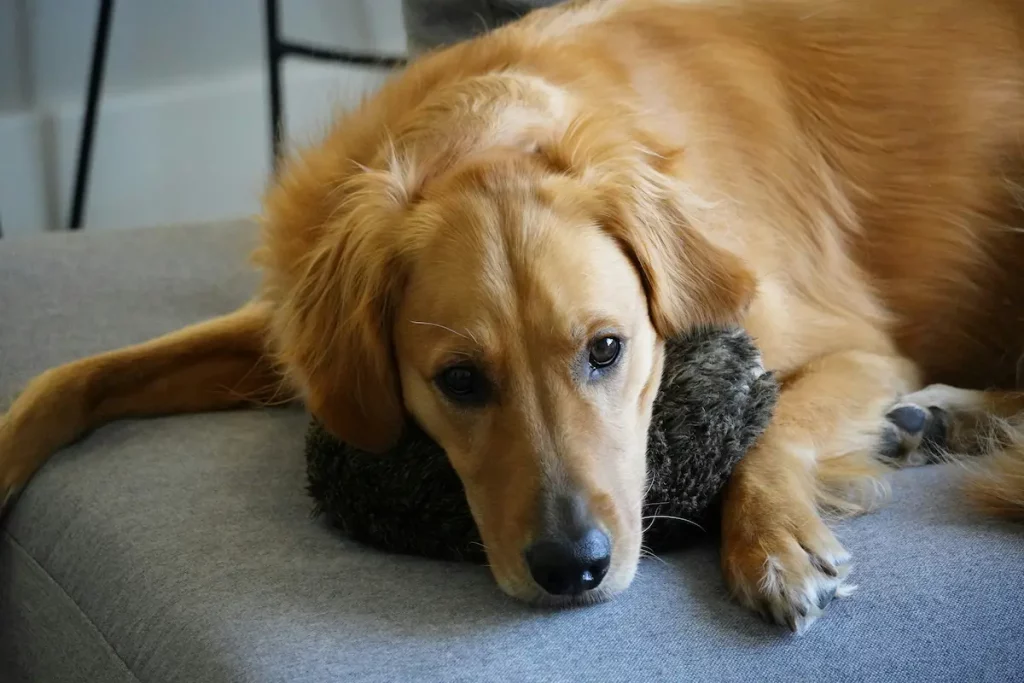
Introduction
Creating a calming routine for anxious dogs can be one of the kindest things you do for your pup. If your dog struggles with anxiety—whether from loud noises, separation, or even everyday changes—you’re not alone. Many dogs, even the most loving ones, feel overwhelmed at times.
What most pet parents don’t realize is that dogs thrive on predictability. With just a few simple daily and weekly habits, you can build a soothing rhythm that helps your dog feel calmer, happier, and more at peace—naturally.
If you’re unsure whether your dog’s behavior is related to stress, start by learning the early signs of anxiety in dogs.
Why Routines Help Anxious Dogs
Dogs are creatures of habit. They take comfort in knowing when it’s time to eat, go for a walk, or settle down for the night. For anxious dogs, especially, routines can be incredibly grounding. A consistent daily schedule gives them a sense of structure and safety, which helps lower stress and reduce anxiety over time.
When a dog doesn’t know what to expect, like when meals happen at random times or walks are unpredictable, it can trigger nervous behaviors such as pacing, whining, barking, or destructive chewing. Unpredictable events or common anxiety triggers like loud noises, changes in schedule, or being alone can heighten your dog’s stress levels. On the other hand, a stable routine helps calm the nervous system and gives your dog something solid to rely on.
Research in canine behavior shows that predictability plays a key role in reducing stress hormones like cortisol. A structured day supports emotional balance, especially for dogs prone to separation anxiety, noise sensitivity, or general restlessness.
Routines don’t have to be rigid or stressful for you, either. It’s not about watching the clock—it’s about creating a reliable rhythm your dog can trust. When your dog knows that good things happen at regular times, they start to feel more at ease in their environment, and that peace of mind is one of the best gifts you can give.
Morning Calming Routine Ideas
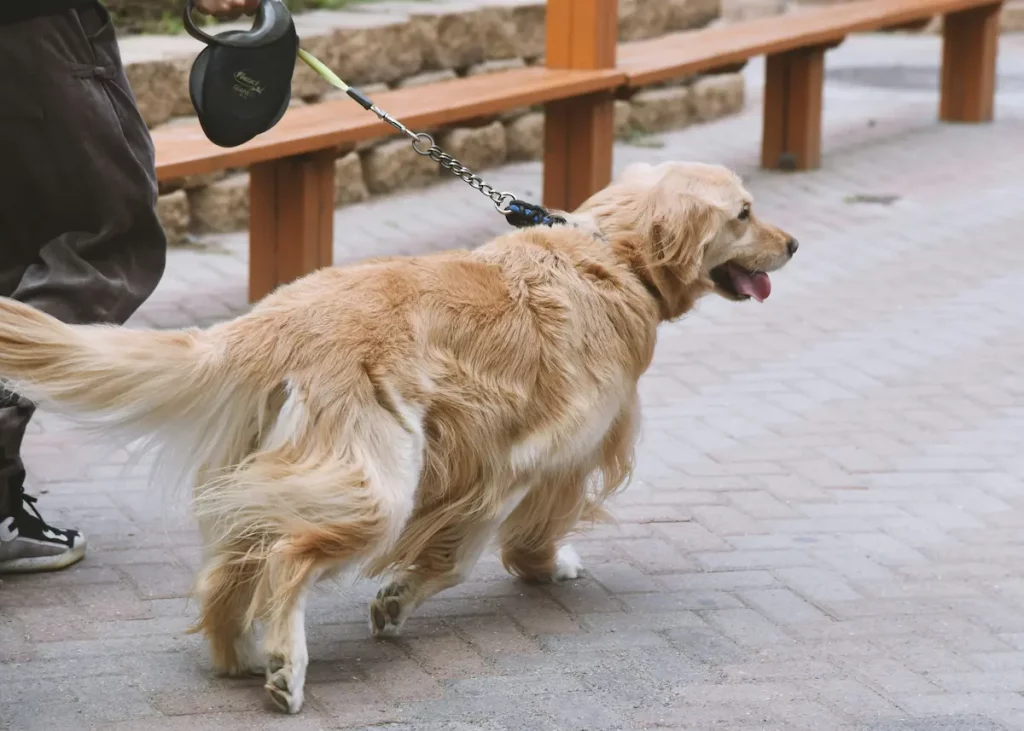
How you start the day can shape your dog’s mood for hours to come. A gentle, low-stress morning routine helps set the tone, especially for anxious dogs who may wake up feeling restless or unsure. With just a few mindful steps, you can help your dog ease into the day feeling calm, safe, and supported.
1. A Gentle Wake-Up
Skip the rushed mornings and try waking your dog with soft sounds and calm energy. Open the blinds to let in natural light, speak softly, and give them a few minutes to stretch and shake off the night.
2. A Calm Potty Break
Head outside for a quiet bathroom break. Let your dog sniff around—this kind of “scent exploration” is a calming activity that helps regulate their emotions and mentally ground them in their environment.
3. Low-Stress Feeding Time
Feed your dog in a peaceful space, away from distractions. Some dogs benefit from slow feeders or snuffle mats, which turn mealtime into a calming, brain-engaging activity.
4. A Relaxed Morning Walk
Instead of a high-energy outing, aim for a calm walk focused on sniffing and slow movement. Avoid loud streets or busy dog parks first thing in the morning—let your dog explore at their own pace in a familiar area.
5. A Touch of Enrichment
After the walk, offer a chew toy or a puzzle game to keep your dog engaged while you get ready for your day. This helps prevent restlessness and separation anxiety as they settle into the morning.
With these morning habits in place, you’re helping your dog start each day with calm confidence. Next, we’ll look at how to keep that peaceful energy going throughout the day, even when you’re not at home.
Midday Calming Routine for Anxious Dogs (Home or Away)
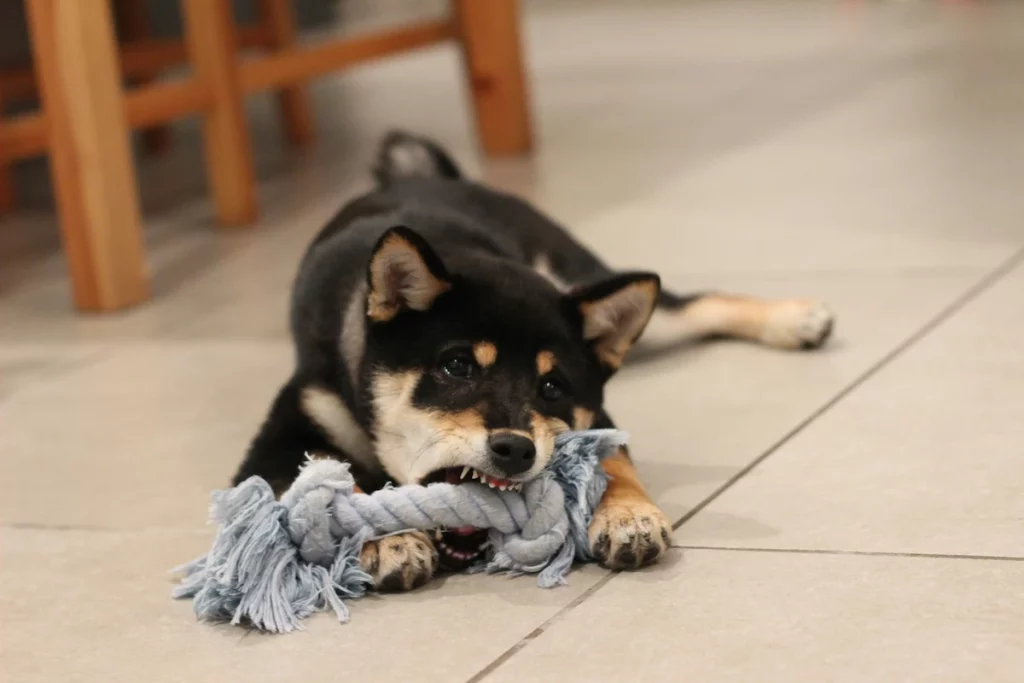
Whether you’re working from home or out for the day, the middle of the day can be tricky for anxious dogs. It’s often a time when they start to feel restless, or if they struggle with separation anxiety, it’s when they notice you’re gone. But with a few calming tools and thoughtful routines, you can help ease their stress even when you’re not there. These midday habits are an important part of a calming routine for anxious dogs, especially those who experience separation-related stress.
If You’re Home During the Day:
1. Keep the Energy Low and Predictable
Try to keep a calm, steady environment—especially if your dog is sensitive to noise or movement. Avoid sudden loud sounds or frequent comings and goings, which can heighten anxiety.
2. Calming Background Sound
Playing soft music or white noise during the day can soothe anxious dogs and block out startling noises like delivery trucks or barking neighbors. Classical music or special playlists like “dog calming sounds” on Spotify can work wonders.
3. Offer a Calming Activity
Give your dog something to focus on during downtime—a frozen Kong, a long-lasting chew, or a calming toy. Mental stimulation helps ease stress and gives them something positive to do while you’re occupied.
If You’re Away From Home:
1. Set Up a Comfort Zone
Designate a cozy, familiar space where your dog feels safe. This could be a crate with a comfy bed, a gated-off room, or a quiet corner with their favorite blanket and toy.
2. Use Calming Scents and Pheromones
Pheromone diffusers like Adaptil release a synthetic version of the comforting scent mother dogs naturally produce. Many pet parents find that they help ease separation anxiety and general stress.
3. Stick to a Midday Check-In (if possible)
If your schedule allows, coming home for a quick walk or hiring a dog walker midday can break up long alone hours and give your dog something to look forward to. Routine visits help reduce feelings of isolation.
Whether you’re nearby or gone for the day, these midday calming strategies give your dog the structure and comfort they need to feel at ease.
Evening Calming Routine for Anxious Dogs
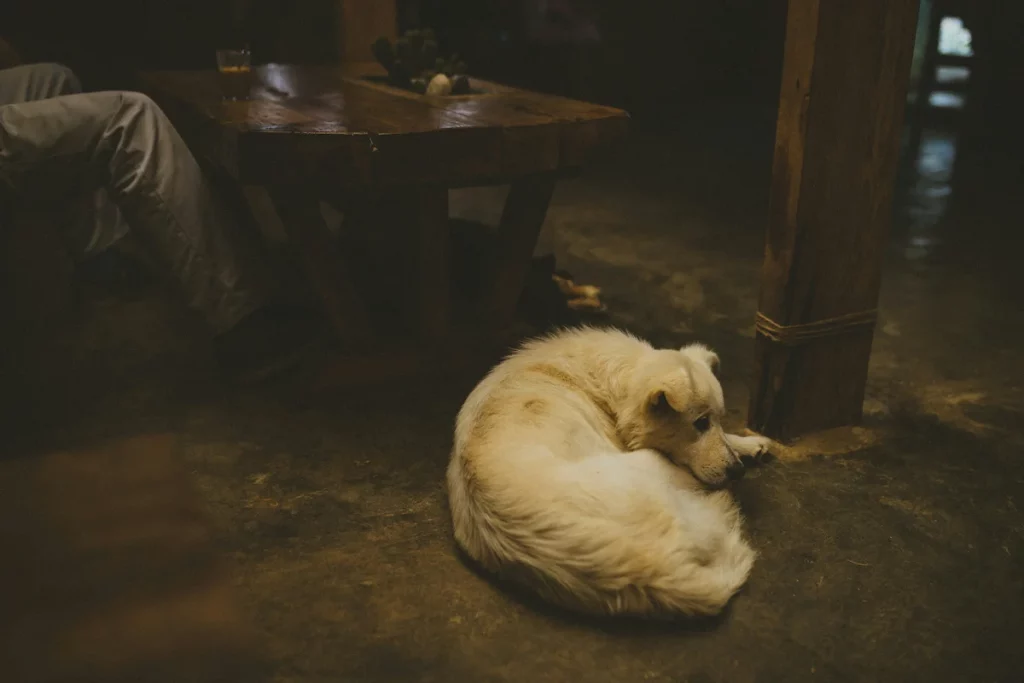
Evenings are a perfect opportunity to wind your dog down after a stimulating day. Whether they’ve spent the day following you around the house or waiting for your return, many anxious dogs carry residual stress into the evening. A calming nighttime routine can help release that tension and set the stage for better sleep, for both of you.
1. Light Exercise or Gentle Play
Before settling in, offer your dog a short walk or a low-energy game to help them release any pent-up energy. Avoid overly exciting games like tug-of-war right before bed. A relaxed sniff walk or a slow-paced game of fetch can do the trick.
2. Calming Treat or Chew
A soothing chew or anxiety-reducing treat can give your dog a sense of comfort and satisfaction. Look for natural calming chews with ingredients like chamomile, L-theanine, or CBD (vet-approved, of course). For more natural ways to calm an anxious dog, including calming treats and enrichment ideas, check out our full guide.
3. Soothing Touch
Some dogs love a gentle massage or a brushing session in the evening. This helps release tension and strengthens your bond. Focus on slow, light strokes—especially around the neck, shoulders, and back.
4. Dimming the Lights
Lowering the lights signals to your dog that it’s time to settle. Just like with humans, soft lighting can help activate natural sleep rhythms and reduce stimulation.
5. Safe, Quiet Sleeping Space
Make sure your dog has a consistent place to sleep that feels secure. Whether it’s a calming dog bed in the corner of your room or a crate with soft bedding, the goal is to create a peaceful environment free from late-night noise or disruptions.
With just a few consistent steps, your evening routine can become your dog’s favorite part of the day—a time of comfort, connection, and calm. Up next, we’ll explore weekly rituals you can add to support your dog’s long-term emotional wellness.
Weekly Calming Rituals
Beyond your dog’s daily routine, weekly calming rituals can add depth and variety to their emotional care. These activities are meant to nurture the bond you share, offer enrichment, and support your dog’s mental wellness over time. They don’t have to be big or time-consuming—just intentional and soothing.
1. One-on-One Bonding Time
Set aside time each week just for you and your dog—no distractions, no phone, no pressure. This could be a slow nature walk, an at-home training session with positive reinforcement, or simply sitting together while you gently pet them. For anxious dogs, this undivided attention is both reassuring and healing.
2. Nature Outings
Even if your dog gets regular walks, aim for a “special” outing once a week—like a quiet trail, a dog-friendly beach, or a new sniff-filled route. Nature has a calming effect on dogs just like it does for us, and changing environments (as long as they’re not overwhelming) can build confidence and reduce anxiety.
3. Grooming as Relaxation
If your dog enjoys it, turn grooming into a weekly ritual of touch and care. A gentle brush, a warm, damp cloth wipe-down, or even a low-stress bath can help them feel refreshed and nurtured. Pair it with calm music and soft praise.
4. Calm Enrichment Games
Try a new puzzle toy or calming enrichment game each week. This keeps your dog mentally stimulated without overstimulating them. Think: frozen treats in a Kong, hide-and-seek with snacks, or homemade scent games.
5. Scheduled Rest Days
Believe it or not, some anxious dogs get overwhelmed by too much activity. Just like us, they need days where they can recharge. On these days, keep stimulation low—skip the busy dog park, lower the volume in the house, and let them nap in peace. These slower moments also strengthen a calming routine for anxious dogs by reinforcing rest and emotional balance.
Incorporating a few of these weekly calming rituals gives your dog something to look forward to while reinforcing trust, balance, and emotional stability. It’s a gentle way to remind them they’re safe and deeply loved.
Tips for Sticking to a Routine
Creating a calming routine for your dog sounds great in theory, but life isn’t always predictable. The good news is that you don’t need to follow a strict schedule down to the minute. What matters most is consistency, flexibility, and showing up for your dog in ways they can count on.
Here are a few simple tips to help you build and maintain a dog anxiety routine that works for both of you:
1. Start Small and Build Slowly
Don’t feel pressured to overhaul your entire day. Begin with just one or two calming habits—like a consistent morning walk or a set bedtime routine—and build from there. The goal is to ease into the routine naturally, so it feels sustainable for you and comforting for your dog.
2. Set Gentle Reminders
Use your phone or a simple wall calendar to remind yourself of key daily or weekly calming activities. This helps you stay consistent and reduces the mental load, especially during busy weeks.
3. Stay Flexible Without Losing Rhythm
Life happens. You might miss a walk or need to shift your schedule. That’s okay. Dogs are more forgiving than we think, as long as the general flow of their day feels familiar and predictable. Try to keep the order of events the same, even if the exact timing varies.
4. Watch Your Dog’s Cues
Your dog will tell you what’s working. If they start to relax more during certain times of day or seem to anticipate calming activities with enthusiasm, you’re on the right track. Trust those signals and adjust your routine to suit their individual needs.
5. Make It Enjoyable for You, Too
When the routine feels like a chore, it’s harder to stick to. Find ways to make these calming rituals nourishing for you as well, like taking deep breaths during your walks, listening to peaceful music, or using the quiet time to unwind together.
Remember, it’s not about being perfect—it’s about creating moments of peace and predictability your dog can trust. The consistency you build will become a powerful tool for reducing your dog’s anxiety and strengthening your bond. Over time, these calming patterns will become the foundation of a calming routine for anxious dogs, offering comfort and predictability. If your dog’s anxiety doesn’t improve with routine and natural support, here’s when to seek professional help.
Final Thoughts: A Little Calm Goes a Long Way
Helping your dog feel safe and secure doesn’t have to involve expensive tools or drastic changes. Most anxious dogs simply need structure, patience, and a little extra intention woven into their day. By creating a calming routine—one that feels familiar, gentle, and predictable—you’re giving your dog a sense of stability that supports both their emotional and physical well-being.
Whether you start with a soft wake-up, a peaceful evening ritual, or just one weekly bonding walk, know that even the smallest steps can make a big difference. What matters most is consistency, kindness, and your presence.
You don’t have to be perfect—just present.
🐾 If you found this post helpful, feel free to save it on Pinterest or share it with a fellow dog parent. And if you’d like a printable version of a calming daily routine, I’m working on one—stay tuned!
Have a calming routine that’s helped your anxious pup? I’d love to hear about it in the comments below. If you know another dog parent who could use a calming routine for anxious dogs, feel free to share this post or save it to Pinterest.
Written by Vaughn Andrews — Founder of Gentle Dog Care
Helping anxious and aging dogs live happier lives with natural care, gentle routines, and a whole lot of love.

